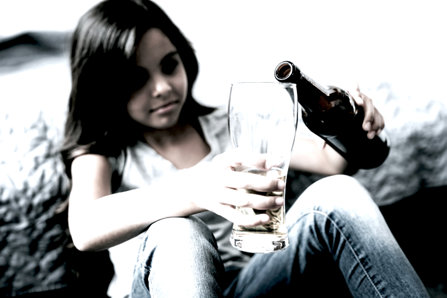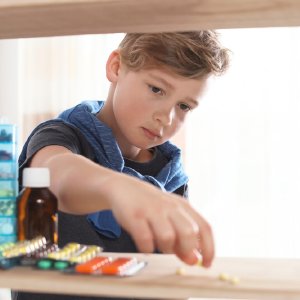The Average First Age of Drug Use: A Crucial Number in Addressing the Drug Crisis

When we consider the prospect of young adult substance abuse, many factors must be kept in mind. When young people misuse drugs and alcohol, they take on pretty serious risk, potentially even more risk than any other age range does. This is because drugs and alcohol tend to have a unique effect on young people.
Drug and alcohol abuse affects young people extensively, potentially causing permanent damage. When someone who is in their teens or early twenties uses drugs and alcohol, they are forcing toxic substances into a brain and body that is still developing.
A developing brain is going to be less resilient and less able to protect itself from toxic substances than a fully developed one is. The same is true of all the other vital areas of the body. The simple truth of it is that, while any and all drug use and alcohol misuse are harmful and negative for all people, there is definitely some added risk when a young person is involved, and we have to be able to think with that when addressing the growing problem.
Let’s take a closer look at the factor of one’s age when they first use drugs, how this factor has changed over the years, how it affects people, and what we might do about it.
First Age of Drug Use—An Important Metric
One of the most concerning factors in young adult or adolescent drug use is the age at which the person first begins using drugs and alcohol. This is called “first age of use” or “the age of first use.”
Studies also show that the younger a person is when he or she uses drugs, the higher the likelihood that he or she will become addicted to those drugs. This is to say that if someone uses heroin for the first time at the age of 18, they are more likely to become chronically addicted to it even after just that one use than someone who uses heroin for the first time at the age of thirty. Both cases are harmful and dangerous and should be avoided, but the incident with the younger adult carries more risk.
Data Straight from the Source

Information from the National Center on Addiction and Substance Abuse (NCASA) supports these theories. According to the NCASA, experimenting with drug and alcohol before age eighteen results in a twenty-five percent chance that the individual will become addicted before the age of twenty-five. That is a huge percentage. That means that anyone who uses drugs before the age of eighteen is rolling the dice in a big way, creating a one in four chance that they will end up being a drug addict. If the individual does not use drugs until much later on in life, his chance of becoming a drug addict drops to four percent. That is a decrease of more than five-hundred percent.
And here is where the statistics become even more concerning. NCASA also researched current young adult substance abuse trends, and they found that about seventy-five percent of high school students have experimented with an addictive substance such as cocaine, marijuana, pills, alcohol, opioids, etc.
Let’s look at the math on this. If seventy-five percent of youngsters use drugs, and if twenty-five percent of those seventy-five percent who used drugs and alcohol become addicts, that means that about eighteen percent of all American high schoolers will develop an addiction before the age of twenty-five. That’s a pretty horrifying fact.
Why are Young People More Influenced by Drugs and Alcohol?
Young people have a lot going on. Their bodies are changing, their brains are still developing, all different kinds of hormones are running rampant, testosterone and estrogen are kicking in, and changes are occurring on the mental, spiritual, and neurological side. With that in mind, we can see how it could be quite harmful to young people when addictive and mind-altering chemicals are brought into the picture.
Taking a young person who still has a developing body and mind and adding into that developing body and mind various drug chemicals is akin to holding a match over an open tank of gasoline; it’s a terrible explosion just waiting to happen. It has been noted that prescribed ADHD drugs/medications have a similar effect on the developing brain and body.
Young people are poised in a very unique position of their lives. They are transitioning from childhood into adulthood. It’s a volatile time. And drugs and alcohol are volatile substances. Mind-altering substances already have a very powerful effect on fully grown adults, and that effect is amplified when it’s a young person experimenting with substances whether they are prescribed or not, simply because their bodies and minds are in such an unguarded, not-yet-fully-developed stage.
A Note on Marijuana Use Amongst Young People

The devil’s advocate to the above statements is that: “Well a huge amount of young people misuse marijuana nowadays, and most of them turn out fine. So surely there is not that much risk in young people experimenting with substances?“
Sure, one could think something along those lines based on increasing marijuana use statistics amongst young people, but let’s take a closer look here.
Enough controversy on the marijuana issue exists right now to practically write an entire encyclopedia. However, enough science also exists at this point that shows that marijuana use can be proven, absolutely, to be harmful to young people. When young people abuse marijuana, it creates a whole range of potentially negative phenomena for them.
One factor that comes from a European study is that marijuana use increases risks for strokes and heart problems for young adults. Both health conditions are usually quite uncommon in young people, but heavy marijuana use in young adults has been tied to incidents of stroke and heart problems.
Extensive marijuana use amongst youngsters also lends itself to long-term memory loss later on in life. This is because heavy marijuana use in one’s younger years has been tied to a stunting of the growth of the hippocampus section of the brain, the section that helps to monitor memory.
Marijuana is also a gateway drug. This, too, is irrefutable. And it is not to say that everyone who uses marijuana will go on to use other drugs. But it is to say that just about everyone who does use hard drugs started with marijuana.
Clearly, marijuana use amongst young people is absolutely something that should be avoided.
Keeping the Younger Generation Safe from Drugs

This information really puts it into perspective. Drug use and alcohol misuse at any age should absolutely be avoided, but young people should be specially protected. The risk factors for adverse, long-term consequences that come from recreational experimentation at a young age are simply too dangerous to countenance substance abuse at this age.
Our current adult generation needs to do its best to ensure that the younger generation does not walk the path of substance abuse. That has to be the key approach going forward. Education, conversation, increased prevention efforts, community action, whatever we have to do to ensure that youngsters don’t walk the path of drug use and alcoholism, will be more than worth it going forward. It’s time to foster a future adult generation of sober and abstinent adults who will lead this country towards a drug-free culture.
Sources:
- https://www.acc.org/about-acc/press-releases/2017/03/09/14/05/marijuana-use-associated-with-increased-risk-of-stroke-heart-failure
- https://developingchild.harvard.edu/science/key-concepts/brain-architecture/
Reviewed by Claire Pinelli, ICAADC, CCS, LADC, RAS, MCAP


